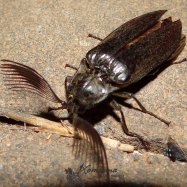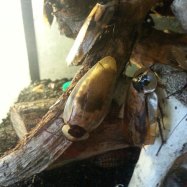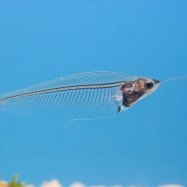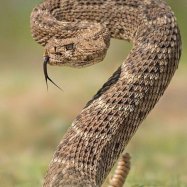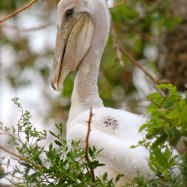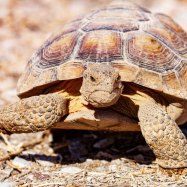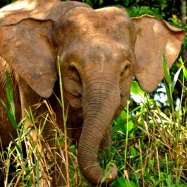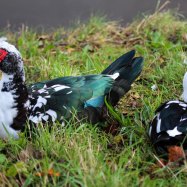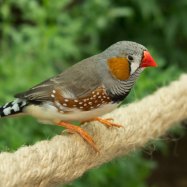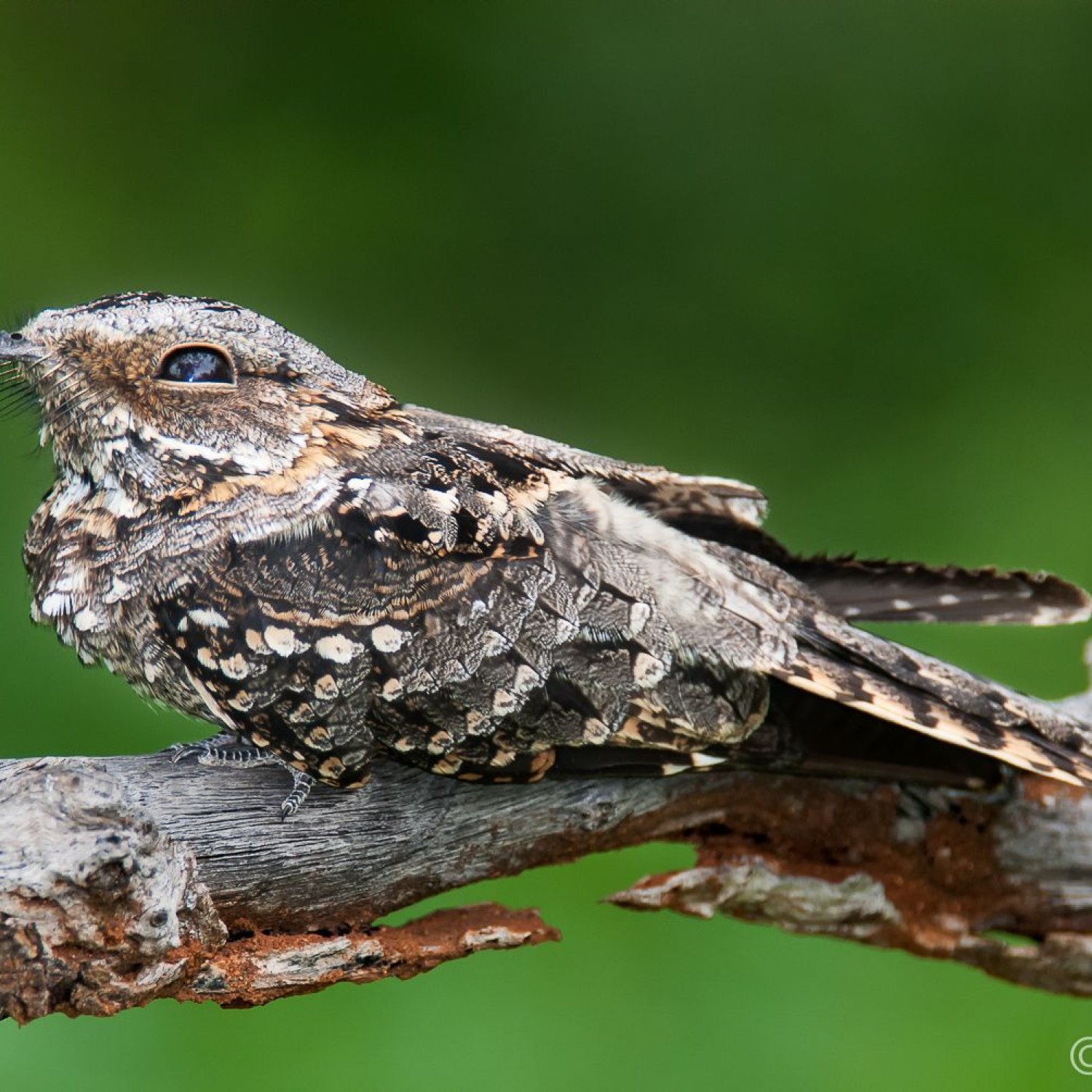
Nightjar
20-40 cm
The nightjar, also known as the moth-bird, is a fascinating creature found in almost every corner of the world. With a compact body, short legs, and remarkably long wings, these birds are true masters of the night skies. Belonging to the Caprimulgidae family, their unique body shape and silent flight make them stand out among other birds. Keep an eye out for these elusive creatures during your next evening stroll! #Nightjar #NocturnalBirds #Caprimulgidae
Animal Details Summary:
Common Name: Nightjar
Kingdom: Animalia
Habitat: Various habitats including forests, grasslands, and deserts
The Mysterious and Fascinating Nightjar: A Master of the Night Sky
When the sun sets and the darkness of the night falls, a new world awakens, a world ruled by creatures of the night. One of the most mysterious and intriguing creatures of the night is the Nightjar. With its enigmatic nature and impressive adaptations, the Nightjar has captured the curiosity and fascination of many. In this article, we will dive into the world of the Nightjar, exploring its unique characteristics and revealing the secrets behind its survival in the dark Nightjar.Discovering the Nightjar
The Nightjar, scientifically known as Caprimulgidae, is a family of birds belonging to the order Caprimulgiformes. These birds are also commonly known as nightjars, although they have various local names in different regions. They are found worldwide, inhabiting a diverse range of environments, including forests, grasslands, and deserts. However, they do not inhabit the polar regions.The Nightjar family consists of around 70 species, each with its unique characteristics and traits. Some of the most well-known species include the European Nightjar, the Common Nighthawk, and the Whip-poor-will. These birds have evolved to become masters of the night sky, utilizing their incredible adaptations to thrive in the darkest hours.
The Unique Adaptations of the Nightjar
The Nightjar has evolved over millions of years to become the ultimate predator of the night. One of its most remarkable adaptations is its cryptic coloration, providing excellent camouflage to blend in with its surroundings Northern Water Snake. This coloration helps them avoid detection by predators and allows them to surprise their prey.The Nightjar's compact body with short legs and long wings is another outstanding adaptation that enables it to fly with great agility and speed. Their long, pointed wings allow them to glide effortlessly through the air, making them excellent aerial predators. The combination of their cryptic coloration and agile flight makes them a formidable predator, capable of catching insects mid-flight.
Feeding Habits of the Nightjar
As their name suggests, the Nightjar is a nocturnal bird, active primarily during the night. They have adapted to hunt insects, making them insectivorous birds. These birds have large mouths, allowing them to catch insects in flight with ease. They are also known to feed on larger insects found on the ground, using their sharp, curved claws to catch their prey.The Nightjar's unique feeding habits have also led to some interesting behavior. For example, they have been observed using their wings to stir up insects from the ground, making it easier for them to catch their prey. They also have a unique way of roosting during the day, often resting on a branch or rock with their body pointing upwards. This posture allows them to blend in seamlessly with their surroundings, making them practically invisible to predators.
A Global Distribution
One of the most fascinating aspects of the Nightjar is its global distribution. While they are found worldwide, each species has its preferred habitat, with some species having a more restricted range. For example, the Common Nighthawk is found in North and South America, while the European Nightjar is found in Europe and Asia.The nightjar's country of origin varies, depending on the species. Some species have a widespread distribution, while others are endemic to a specific country or region. However, no matter the species or location, the Nightjar can be found in almost every corner of the globe.
The Nightjar's Role in the Ecosystem
The Nightjar plays a crucial role in the ecosystem, mainly through its feeding habits. These birds primarily feed on insects, helping to control their populations. They also serve as prey for larger predators, contributing to the balance in the food chain. However, the Nightjars' role in pollination and seed dispersal is often overlooked. As they feed on insects, they transfer pollen from one plant to another, aiding in the fertilization process. They also disperse seeds as they roam through different habitats, playing a vital role in seed dispersal.The Nightjar's Conservation Status
Despite their global distribution, some Nightjar species are facing threats and challenges, resulting in declining populations. One of the biggest threats facing Nightjars is habitat loss. As their habitats are destroyed or altered, it becomes increasingly challenging for them to find suitable places to feed and breed. Human activities, such as deforestation and urban development, have contributed significantly to the loss of Nightjar habitats.Another threat to Nightjar populations is light pollution. As nocturnal birds, Nightjars navigate and hunt by the light of the moon and stars. However, artificial lighting has interfered with their natural patterns, causing them to become disoriented and unable to find food. This has resulted in a decline in their population and has led to some species being listed as endangered or vulnerable.
In Conclusion
The Nightjar is a fascinating and mysterious creature, perfectly adapted for life in the dark. Their impressive camouflage, agile flight, and unique feeding habits make them a remarkable species to study and observe. As we strive to protect our environment and preserve the delicate balance of nature, it is essential to recognize and appreciate the role of each species, including the enigmatic Nightjar. So the next time you are out in the night, take a moment to look up at the sky and appreciate the wonders of the Nightjar, a true master of the night.

Nightjar
Animal Details Nightjar - Scientific Name: Caprimulgidae
- Category: Animals N
- Scientific Name: Caprimulgidae
- Common Name: Nightjar
- Kingdom: Animalia
- Phylum: Chordata
- Class: Aves
- Order: Caprimulgiformes
- Family: Caprimulgidae
- Habitat: Various habitats including forests, grasslands, and deserts
- Feeding Method: Insectivorous
- Geographical Distribution: Found worldwide, except in polar regions
- Country of Origin: Varies depending on species
- Location: Global
- Animal Coloration: Cryptic, blended with their surroundings
- Body Shape: Compact body with short legs and long wings
- Length: 20-40 cm
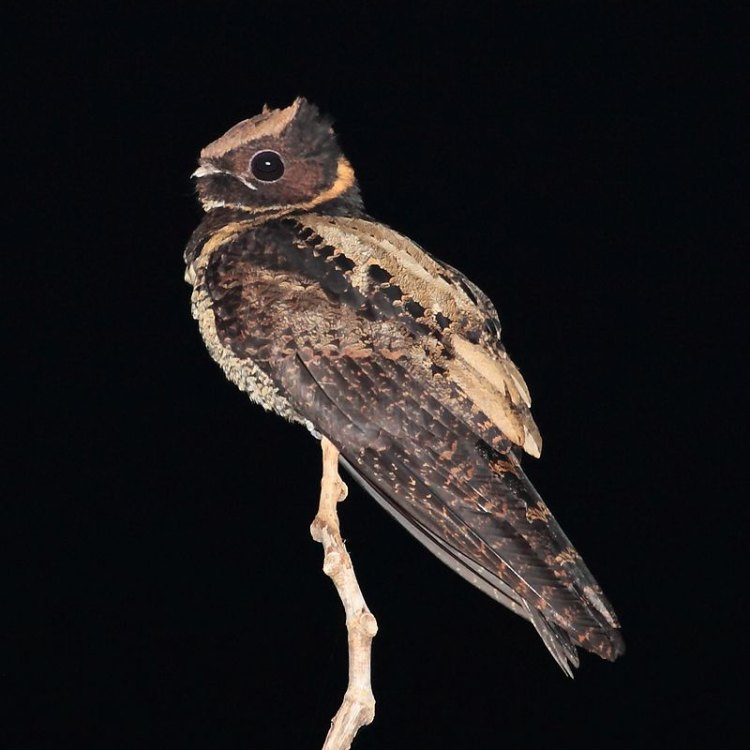
Nightjar
- Adult Size: Small to medium-sized
- Average Lifespan: 3-5 years
- Reproduction: Oviparous
- Reproductive Behavior: Males perform courtship displays
- Sound or Call: Unique, melodious calls at night
- Migration Pattern: Some species migrate, while others are sedentary
- Social Groups: Solitary or found in small groups
- Behavior: Nocturnal, active at night
- Threats: Habitat loss, predation, and climate change
- Conservation Status: Varies depending on species
- Impact on Ecosystem: Control population of nocturnal insects
- Human Use: Tourist attraction, folklore and myths
- Distinctive Features: Large eyes, wide gape, long wings
- Interesting Facts: Some nightjars have wing markings that resemble eyes to confuse predators
- Predator: Birds of prey, snakes, and mammals
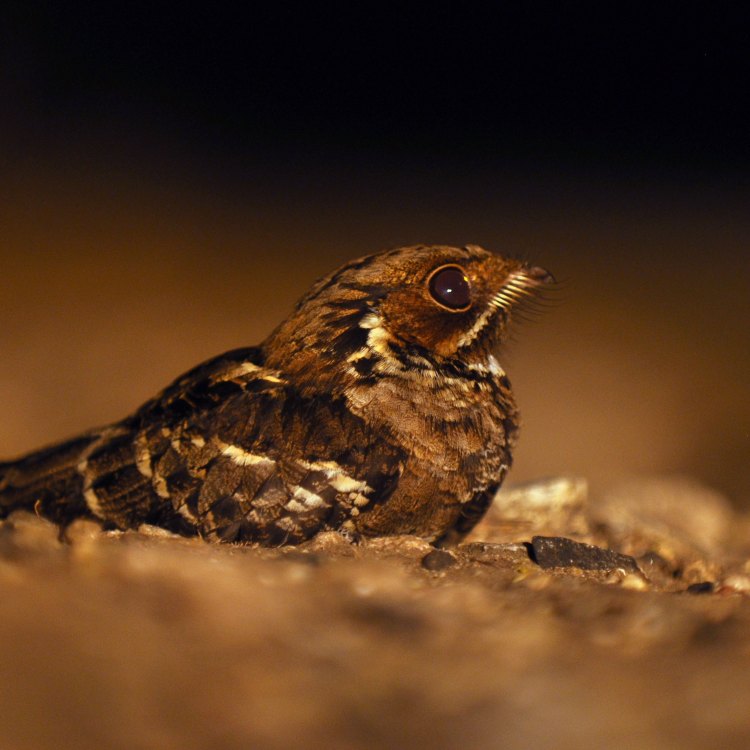
Caprimulgidae
The Fascinating Life of Nightjars: A Bird of the Night
Nature has a way of surprising us with its diverse and unique creatures. Among the plethora of birds that occupy our planet, one species stands out for its distinctive features and mysterious behavior – the nightjar.The nightjar, also known as the goatsucker or night hawk, is a small to medium-sized bird that belongs to the family Caprimulgidae. It is predominantly found in the Americas, Africa, Europe, and Asia, with over 100 different species currently identified PeaceOfAnimals.Com. This elusive bird has an intriguing life, making it a subject of fascination for bird watchers and scientists alike.
Let's take a closer look at the life and characteristics of this captivating bird.
Size, Lifespan, and Reproduction
Nightjars come in various sizes, ranging from small to medium-sized. On average, they are about 7-10 inches in length, with a wingspan of 16-30 inches. They have a plump body, large head, and short legs, giving them a stout and compact appearance. Despite their small size, they possess a unique set of physical traits that make them stand out from other birds.These creatures have an average lifespan of 3-5 years in the wild. However, some species, such as the Great Potoo, have been known to live up to 25 years in captivity.
Nightjars reproduce through oviparous, meaning they lay eggs instead of giving birth to live young Nile Crocodile. Females typically lay one to two eggs per clutch, and both parents take turns incubating the eggs until they hatch. The chicks are born with a covering of down feathers and are completely dependent on their parents for food and protection.
Reproductive Behavior and Vocalization
One of the most intriguing aspects of nightjars is their unique reproductive behavior. During the breeding season, males perform elaborate courtship displays to attract females. These displays involve the male hovering and swooping in the air while making distinct noises with his mouth and clapping his wings. The male also showcases his colorful plumage, which has a reddish-brown hue and white patches, to lure in potential mates.Nightjars are famously known for their melodious calls, which can be heard at night. They have been compared to the sounds of whistling or fluting, making them a popular subject of traditional folklore and myths. The calls are believed to serve as a means of communication among the birds, communicating their territories and attracting mates. While the exact purpose of their calls is still not fully understood, it undoubtedly adds to the nightjar's allure.
Migration Pattern and Social Behavior
Nightjars have a diverse migration pattern. Some species are migratory, traveling long distances to find suitable breeding grounds in the spring and summer. Others are sedentary, meaning they do not migrate and spend their entire lives in the same area. The reason for this difference in behavior is still unknown, but scientists believe it may be due to varying environmental conditions and availability of food.These birds are typically solitary or found in small groups. They are mostly active at night, making it difficult to spot them during the day. However, they may gather during the breeding season to engage in courtship displays and mating.
Nocturnal Behavior and Threats
As the name suggests, nightjars are nocturnal birds, meaning they are active at night and rest during the day. They have large eyes, wide gapes, and excellent night vision, making them well-adapted to hunt in low light conditions. They feed primarily on insects, such as moths, beetles, and flying termites, which they catch in mid-air using their wide and agile mouths.Like most creatures, nightjars also face threats in their natural habitat. The destruction of their habitat due to human activities, such as logging and agriculture, poses a significant threat to their population. They are also at risk of predation by birds of prey, such as owls, and ground predators like snakes and mammals. Climate change is also a growing concern, affecting their habitat and prey availability.
Conservation Status and Impact on Ecosystem
The conservation status of nightjars varies depending on the species. Some, like the Whip-poor-will, are listed as Near Threatened, while others, such as the Lesser Nighthawk, are considered Least Concern. However, the overall trend for most species is a decline in population due to various threats mentioned earlier.Nightjars play a crucial role in controlling the population of nocturnal insects. They consume an astonishing amount of insects, making them an essential part of the ecosystem. If their population were to decline, it would have a significant impact on the ecosystem, causing an imbalance in insect populations.
Human Use and Distinctive Features
Nightjars have fascinated humans for centuries, leading to their use in various aspects of human life. In some cultures, these birds are used in traditional medicine, believed to have healing properties. They are also a popular tourist attraction for bird watchers, offering the chance to spot these elusive creatures in their natural habitat.But what makes this bird truly unique are its physical features. Their large eyes, wide gape, and long wings stand out, giving them a mysterious and almost mystical appearance. Additionally, some species have wing markings that resemble eyes, making them look like they have multiple eyes to confuse predators.
Predators and Interesting Facts
As mentioned earlier, nightjars face threats from a range of predators, including birds of prey, snakes, and mammals. However, these nocturnal birds have developed some interesting defense mechanisms to protect themselves. As a means of camouflage, nightjars often sit motionless during the day, blending into their surroundings, making them nearly impossible to spot. Some species also have feather patterns and behaviors that help in their disguise, such as the wing markings that look like eyes.Here are a few more interesting facts about nightjars:
- Nightjars have a unique habit of sitting on the ground, which makes them vulnerable to predators but helps them blend in with their environment.
- The Oilbird, a type of nightjar found in South America, is the only bird known to navigate by echolocation like bats.
- In some cultures, the call of a nightjar is considered a sign of impending death, leading to its association with death and bad omens.
- Nightjar fossils have been found dating back over 60 million years, making them one of the oldest surviving bird species.
In conclusion, the nightjar is a mysterious and fascinating bird of the night. Its distinct characteristics, behavioral patterns, and vital role in the ecosystem make it a captivating subject for study and observation. As humans, it is our responsibility to protect and preserve these unique creatures for future generations to admire and appreciate.
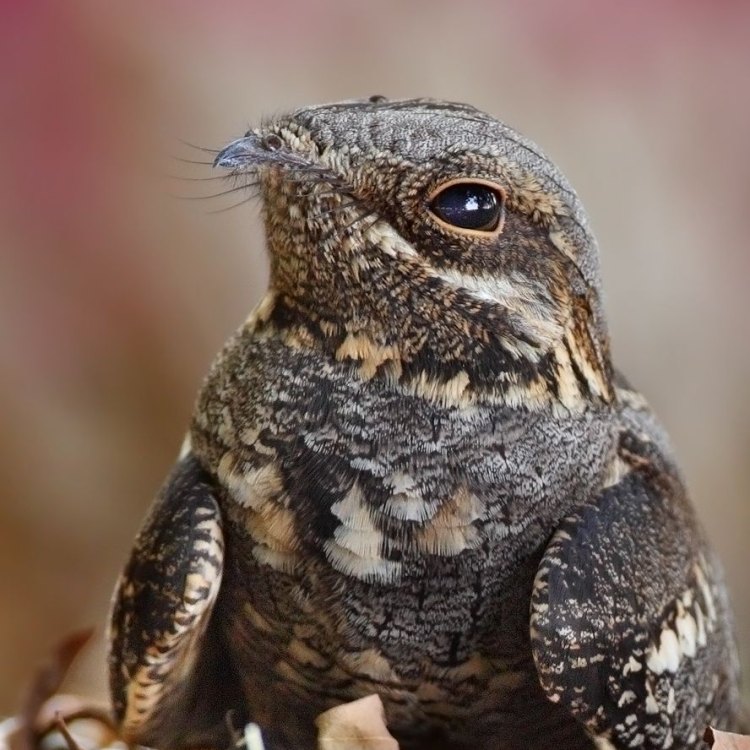
The Mysterious and Fascinating Nightjar: A Master of the Night Sky
Disclaimer: The content provided is for informational purposes only. We cannot guarantee the accuracy of the information on this page 100%. All information provided here may change without prior notice.

